Yard number 57 Length 294 m Beam 44 m | Completed June 1976 Launched 5 December 1975 | |
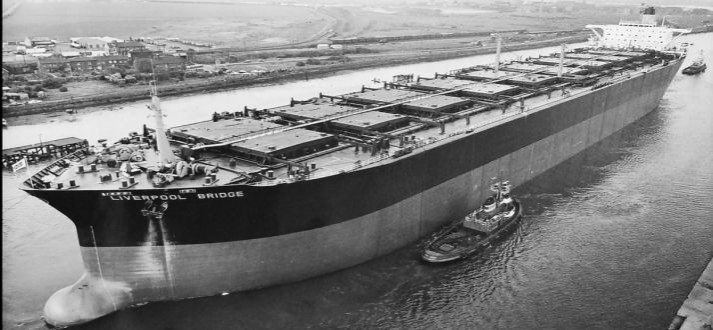 | ||
Identification IMO number 7343805Call sign GULK | ||
Sinking of the mv derbyshire
MV Derbyshire was an ore-bulk-oil combination carrier built in 1976 by Swan Hunter, as the last in the series of the Bridge-class sextet. She was registered at Liverpool and owned by Bibby Line.
Contents
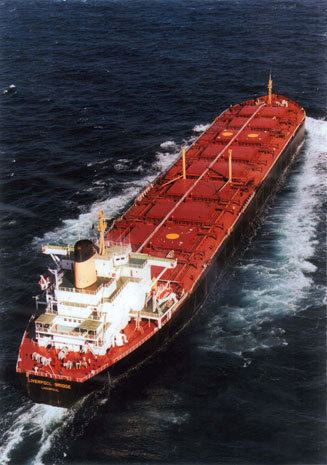
She was lost on 9 September 1980 during Typhoon Orchid, south of Japan. All 42 crew members and two of their wives were killed in the sinking. At 91,655 gross register tons, she was—and remains—the largest British ship ever to have been lost at sea.

History
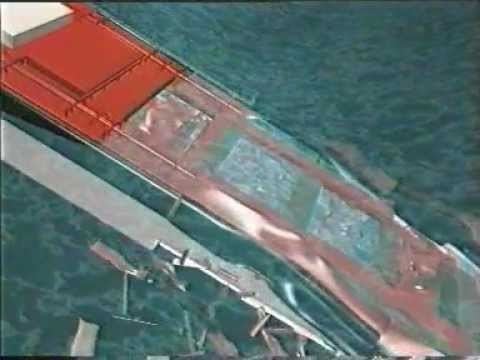
Derbyshire was launched in late 1975 and entered service in June 1976, as the last ship of the Bridge-class combination carrier, originally named Liverpool Bridge. Liverpool Bridge and English Bridge (later Worcestershire) were built by Seabridge for Bibby Line. The ship was laid up for two of its four years of service life.
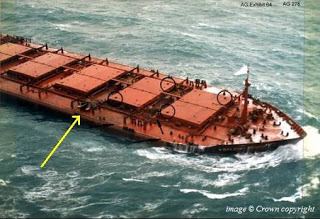
In 1978, Liverpool Bridge was renamed Derbyshire, the fourth vessel to carry the name in the company's fleet. On 11 July 1980, on what turned out to be the vessel's final voyage, Derbyshire left Sept-Îles, Canada, her destination being Kawasaki, Japan. Derbyshire was carrying a cargo of 157,446 tonnes of iron ore.

On 9 September 1980, Derbyshire hove-to in Typhoon Orchid some 230 miles from Okinawa, and was overwhelmed by the tropical storm killing all aboard. Derbyshire never issued a Mayday distress message.
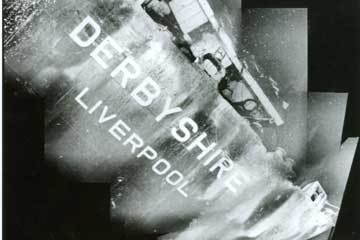
The search for Derbyshire commenced on 15 September 1980 and was called off six days later when no trace of the vessel was found, and it was declared lost. Six weeks after Derbyshire sank, one of the vessel's lifeboats was sighted by a Japanese tanker.
In June 1994, the wreck of Derbyshire was found at a depth of 4 km, spread over 1.3 km. An additional expedition spend over 40 days photographing and examining the debris field looking for evidence of what sank the ship. Ultimately it was determined that waves crashing over the front the ship had sheared off the covers of small ventilation pipes near the bow. Over the next 30+ hours, seawater had entered through the exposed pipes into the forward section of the ship, causing the bow to slowly ride lower and lower in the water. Eventually, the bow was completely exposed to the full force of the rough waves which caused the massive hatch on the first cargo hold to buckle inward allowing hundreds of tons of water to enter in moments. As the ship started to sink, the second, then third hatches also failed, dragging the ship underwater. As the ship sank, the water pressure caused the ship to be twisted and torn apart by implosion.
Memorials
A bronze plaque was placed on the wreckage as a memorial to those who were lost.
On 21 September 1980, the Bibby Line vessel Cambridgeshire held a memorial service for the Derbyshire in the area the vessel was lost.
The 20th anniversary of the vessel's loss was marked by a memorial service in Liverpool, England, which was attended by Deputy Prime Minister John Prescott.
In 2010, a memorial service was held in the vessel's home port of Liverpool on the 30th anniversary of Derbyshire's loss.
